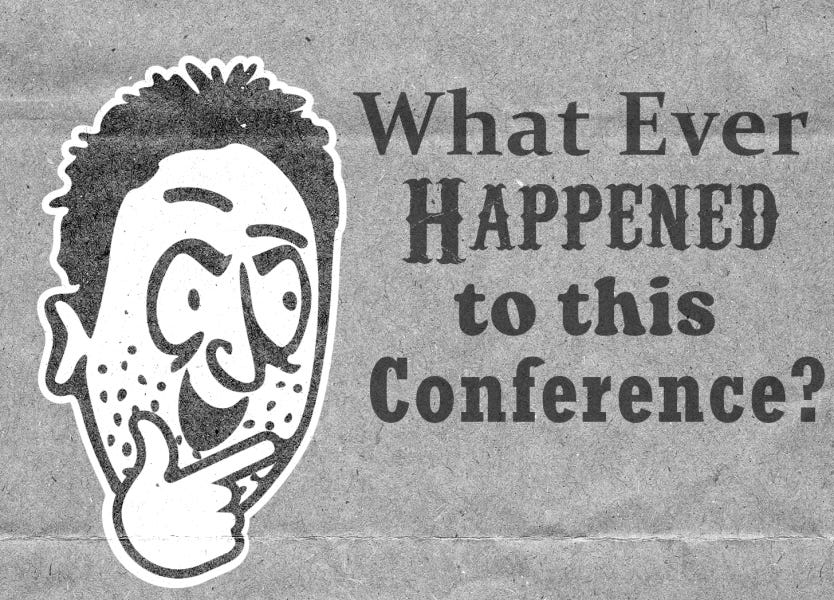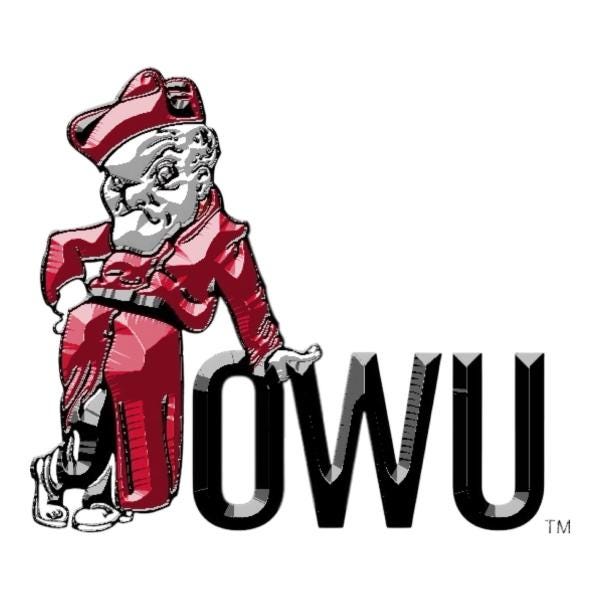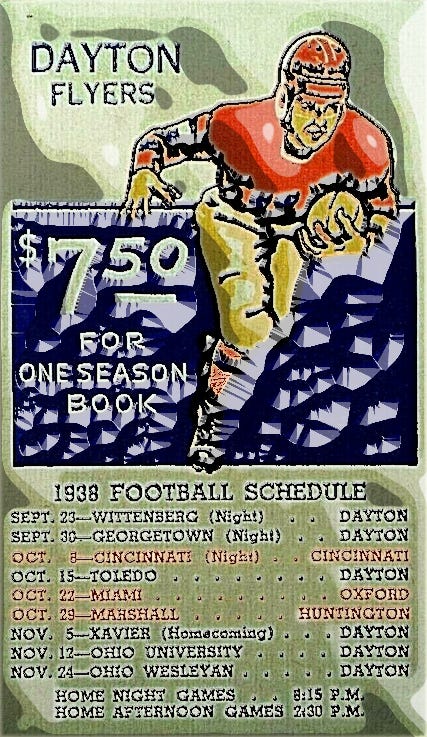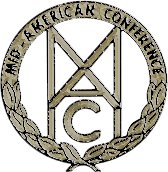Whatever Happened to This Conference?? - The Buckeye Athletic Association aka the Buckeye Conference
Conference realignment is seemingly never going away in college football and it has become a topic of constant conversation. Due to this uncertainty, we started to wonder what happened to conferences in college football’s past and how they fell out of the picture. We will take a brief tour of some defunct/renamed conferences, explore their members, give a brief summary on how the conference fell apart and where everyone wound up after the conference disbanded.
The Buckeye Athletic Association
The Buckeye Athletic Association, also known as the Buckeye Conference, was an athletic league formed out of members of the Ohio Athletic Conference (OAC). The OAC still exists today with nine members which are all private schools in the state of Ohio.
The original membership of the Buckeye Conference all originated in the OAC but multiple schools left the OAC in 1926 to form the Buckeye Conference. The Buckeye Conference’s original members included Ohio Wesleyan University (Battling Bishops), Ohio University (Bobcats), Miami University (known then as the Big Reds and currently the RedHawks), the University of Cincinnati (Bearcats), Denison University (Baptists, and later Big Red) and Wittenberg University (Lutherans, and later as Tigers). The Battling Bishops of OWU won the first title in football in 1926. (Absolutley no way we were going to pass up beveling a Battling Bishop)
The OAC was not a fan of these schools being in the OAC and the Buckeye Conference at the same time. The league was asked to end the membership in both the OAC and the Buckeye in 1928, at which time all the schools voted to instead leave their membership in the OAC behind and be only members of the Buckeye.
The Buckeye Conference Timeline
The Wittenberg Tigers won the football championship in 1927 and were co-champs with Ohio Wesleyan in 1928. However, they withdrew from Buckeye Conference membership in November 1929 on charges of using professional players.
In 1930, the Little Giants of Wabash College and the Tigers of DePauw University came from Indiana to add probationary teams to the league to add like schools to the mix.
Wittenberg returned to an affiliate membership in 1931, playing only Miami that year but with players named to the All-Conference lists from 1931 through the 1933 football, cross country and wrestling seasons and the 1934 basketball, baseball and track seasons. They then left the conference again in 1936.
Both DePauw and Wabash were out of the league after the 1932 football season, just as they were about to become full members of the league.
Also in 1932, the league added the Thundering Herd of Marshall College (today Marshall University) for all sports but football for 1932–33, and the Herd began playing football as well in for the 1933 season.
Finally in 1935, the University of Dayton was added to the league after much resistance from Cincinnati and Miami (OH).
After the 1938 spring league meetings, Western Michigan University (Kalamazoo, Michigan) and Xavier University (in Cincinnati, Ohio) were invited to join the league as probationary members, replacing Cincinnati who had made the decision to go independent in 1938. The Buckeye Conference would continue on with seven teams.
Total Buckeye Conference Championships
Ohio - 6
Miami (OH) - 3
Cincinnati - 2
Ohio Wesleyan - 2
Wittenberg - 2
Marshall - 1
Dayton - 1
The Buckeye Conference Breaks Up
Apparently the Thundering Herd was a lightning rod of issues in the Buckeye Conference. Complaints by Marshall about its treatment by the league and complaints about Marshall by many league members led to dissension within the league from about 1935-36 on. The unrest in the league led many to believe the league would not be around for the 1938 season.
As Bobcats of Ohio were winning their league best sixth championship in November of '38, the league got together in December for annual winter meetings.
On December 10, 1938, the Buckeye Conference announced 1938-39 would be the final season the league would operate, a decision by all members schools - Dayton, Marshall, Miami, Ohio, and Ohio Wesleyan. (Probationary members WMU and Xaiver were not allow to cast votes in this decision.)
The 1938 Buckeye Conference championship was split by Ohio and Dayton. (a beveled Dayton schedule from 1938)
While many at the time thought the league might reform at some point among the Ohio schools and possibly WMU, the United States' entry into World War II in December 1941 put any thoughts of rebuilding the Buckeye on the shelf.
Evolution of the Buckeye to the Mid-American Conference.
Post-war, 1946, the idea of the Buckeye Conference was the template for the new Mid-American Conference (MAC), started that first year after the war. The five charter members of the Mid-American Conference were Ohio University, Butler University, the University of Cincinnati, Wayne University (now Wayne State University), and Western Reserve University - a school the Buckeye had tried, along with nearby Case Institute of Technology to get into the league on three different occasions. (the original MAC logo beveled below)
Wayne University left after the first year, in 1947. Miami University and Western Michigan University, two members of the Buckeye at its demise, took the place of those charter members for the 1948 season.
The MAC then added the University of Toledo in 1950, Kent State University, 1951, and Bowling Green State University in 1952.
The University of Cincinnati resigned its MAC membership on February 18, 1953, with an effective date of June 1, 1953 of leaving the league.
Marshall College entered the MAC for all sports except football in 1953, playing its first season as a MAC football member in 1954. The Thundering Herd were a member of the league from 1953-69 - terminated by the league for violations in the football and basketball program unearthed in 1968, as Marshall got a one-year probation from the NCAA but never earned another hearing with the MAC in the early 1970s, eventually joining the Southern Conference in 1977. Marshall would rejoin the MAC in 1997 out of the SoCon and I-AA football. The Herd would stay in the MAC until 2005, when Marshall joined the Conference USA with Central Florida, as UCF was also in the MAC at that time.
The MAC went on to expand in a way the Buckeye Conference had first expanded, adding Central Michigan University and Eastern Michigan University in 1972. Ball State University and Northern Illinois University were added in 1973 (although NIU left in 1986, then rejoined with Marshall in 1997). The University of Akron joined the MAC in 1992, and the State University of New York at Buffalo joined in 1998, with the Zips and Bulls both coming from I-AA (now FCS).
The Other Former Buckeye Conference Members
The University of Dayton took a long path of independence in football but multiple conference changes in basketball and other sports but is now currently in the Atlantic-10, except for football which they are in the Pioneer League.
Ohio Wesleyan wound up in the North Coast Athletic Conference with four former Buckeye Conference members, Denison University, DePauw University, Wabash College & Wittenberg University.
Sound off in the comments below if you’d like us to review what occurred in another defunct conference.








A whole article on the weird trajectory of UCF in detail would be a must read